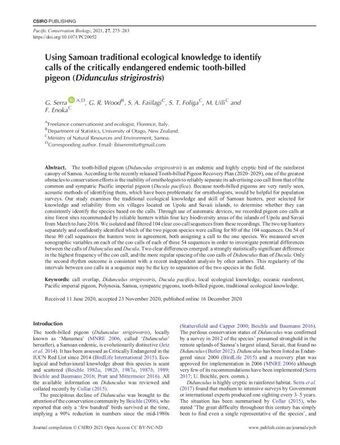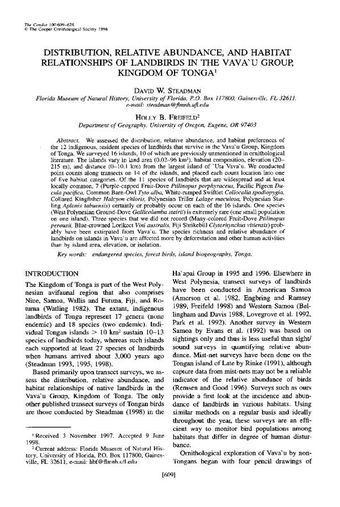Elasmobranch captures in the Fijian pelagic longline fishery
- Description:
- 1. Pelagic longline fisheries for relatively fecund tuna and tuna-like species can have large adverse effects on incidentally caught species with low-fecundity, including elasmobranchs. 2. Analyses of observer programme data from the Fiji longline fishery from 2011 to 2014 were conducted to characterize the shark and ray catch composition and identify factors that significantly explained standardized catch rates. Catch data were fitted to generalized linear models to identify potentially significant explanatory variables. 3. With a nominal catch rate of 0.610 elasmobranchs per 1000 hooks, a total of 27 species of elasmobranchs were captured, 48% of which are categorized as Threatened under the IUCN Red List. Sharks and rays made up 2.4% and 1.4%, respectively, of total fish catch. Blue sharks and pelagic stingrays accounted for 51% and 99% of caught sharks and rays, respectively. 4. There was near elimination of shark lines, branchlines set at or near the sea surface via attachment directly to floats, after 2011. 5. Of caught elasmobranchs, 35% were finned, 11% had the entire carcass retained, and the remainder was released alive or discarded dead. Finning of elasmobranchs listed in CITES Appendix II was not observed in 2014. 6. There were significantly higher standardized shark and ray catch rates on narrower J-shaped hooks than on wider circle hooks. Based on findings from previous studies on single factor effects of hook width and shape, the smaller minimum width of the J-shaped hooks may have caused the higher shark and ray catch rates. For sharks, the effect of hook width may have exceeded the effect of hook shape, where small increases in shark catch rates have been observed on circle vs J-shaped hooks. 7. Shark and ray standardized catch rates were lowest in the latter half of the year. Focusing effort during the second half of the year could reduce elasmobranch catch rates.
- Display date:
- 2016
- Collections:
- Secretariat of the Pacific Regional Environment Programme (SPREP)
- Publisher:
- John Wiley & Sons Ltd.
- Content partner:
- Secretariat of the Pacific Regional Environment Programme (SPREP)
- Availability:
- Not specified
-
Copyright status: All rights reservedFind out more about what you are able to do with this itemThis item is all rights reserved, with means you'll have to get permission from Secretariat of the Pacific Regional Environment Programme (SPREP) before using it. For more information, please see our use and reuse page.What can I do with this item?Non-infringing useNZ copyright law does not prevent every use of a copyright work, and this item may be hosted by an international institute or organisation. You should consider what you can and cannot do with a copyright work.No sharingYou may not copy and/or share this item with others without further permission. This includes posting it on your blog, using it in a presentation, or any other public use.No modifyingYou are not allowed to adapt or remix this item into any other works.No commercial useYou may not use this item commercially.
Related items
Welcome and warm Pasifik greetings
The information on this site has been gathered from our content partners.
The names, terms, and labels that we present on the site may contain images or voices of deceased persons and may also reflect the bias, norms, and perspective of the period of time in which they were created. We accept that these may not be appropriate today.
If you have any concerns or questions about an item, please contact us.

